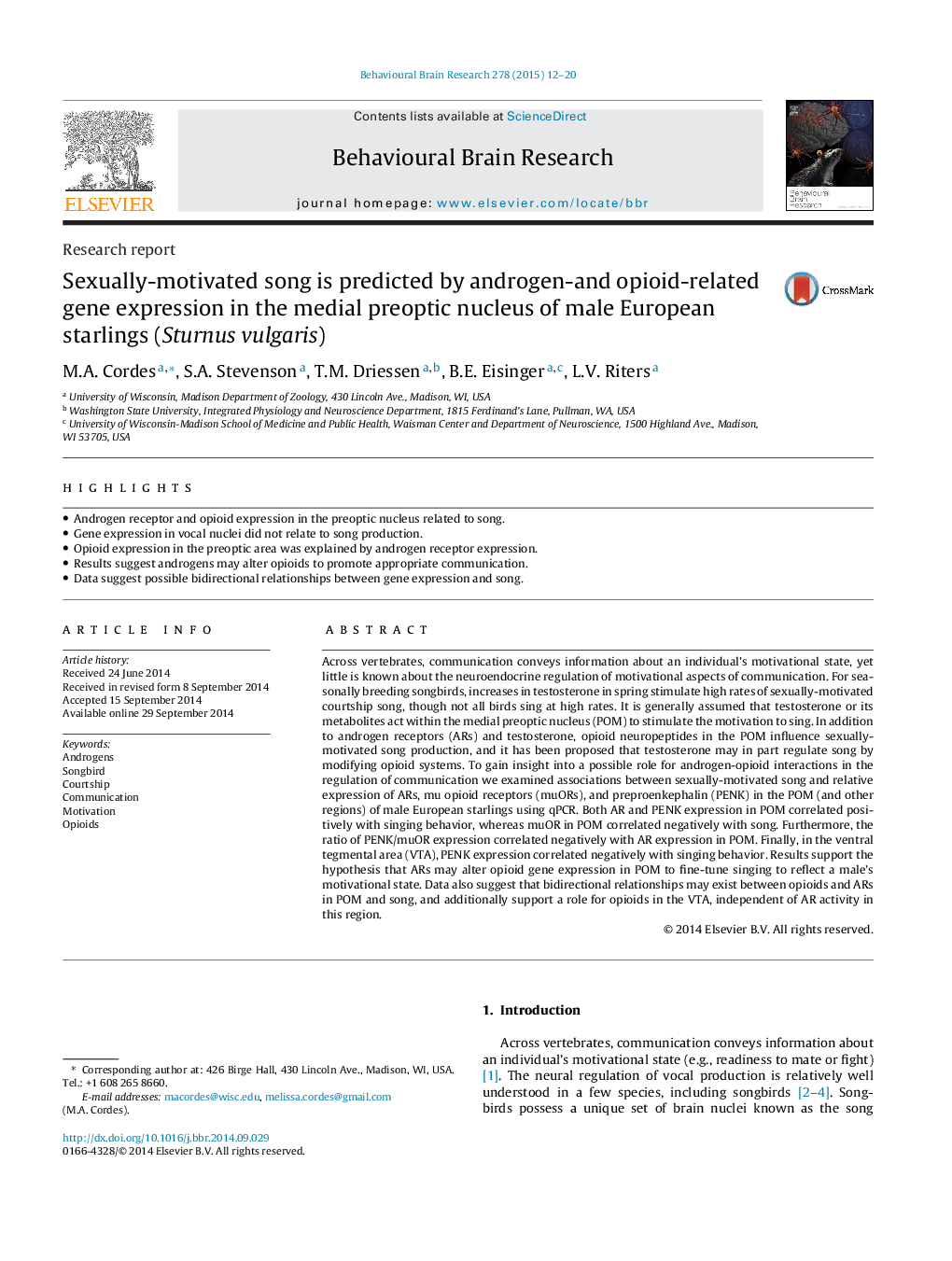| کد مقاله | کد نشریه | سال انتشار | مقاله انگلیسی | نسخه تمام متن |
|---|---|---|---|---|
| 6257549 | 1612954 | 2015 | 9 صفحه PDF | دانلود رایگان |

- Androgen receptor and opioid expression in the preoptic nucleus related to song.
- Gene expression in vocal nuclei did not relate to song production.
- Opioid expression in the preoptic area was explained by androgen receptor expression.
- Results suggest androgens may alter opioids to promote appropriate communication.
- Data suggest possible bidirectional relationships between gene expression and song.
Across vertebrates, communication conveys information about an individual's motivational state, yet little is known about the neuroendocrine regulation of motivational aspects of communication. For seasonally breeding songbirds, increases in testosterone in spring stimulate high rates of sexually-motivated courtship song, though not all birds sing at high rates. It is generally assumed that testosterone or its metabolites act within the medial preoptic nucleus (POM) to stimulate the motivation to sing. In addition to androgen receptors (ARs) and testosterone, opioid neuropeptides in the POM influence sexually-motivated song production, and it has been proposed that testosterone may in part regulate song by modifying opioid systems. To gain insight into a possible role for androgen-opioid interactions in the regulation of communication we examined associations between sexually-motivated song and relative expression of ARs, mu opioid receptors (muORs), and preproenkephalin (PENK) in the POM (and other regions) of male European starlings using qPCR. Both AR and PENK expression in POM correlated positively with singing behavior, whereas muOR in POM correlated negatively with song. Furthermore, the ratio of PENK/muOR expression correlated negatively with AR expression in POM. Finally, in the ventral tegmental area (VTA), PENK expression correlated negatively with singing behavior. Results support the hypothesis that ARs may alter opioid gene expression in POM to fine-tune singing to reflect a male's motivational state. Data also suggest that bidirectional relationships may exist between opioids and ARs in POM and song, and additionally support a role for opioids in the VTA, independent of AR activity in this region.
Journal: Behavioural Brain Research - Volume 278, 1 February 2015, Pages 12-20